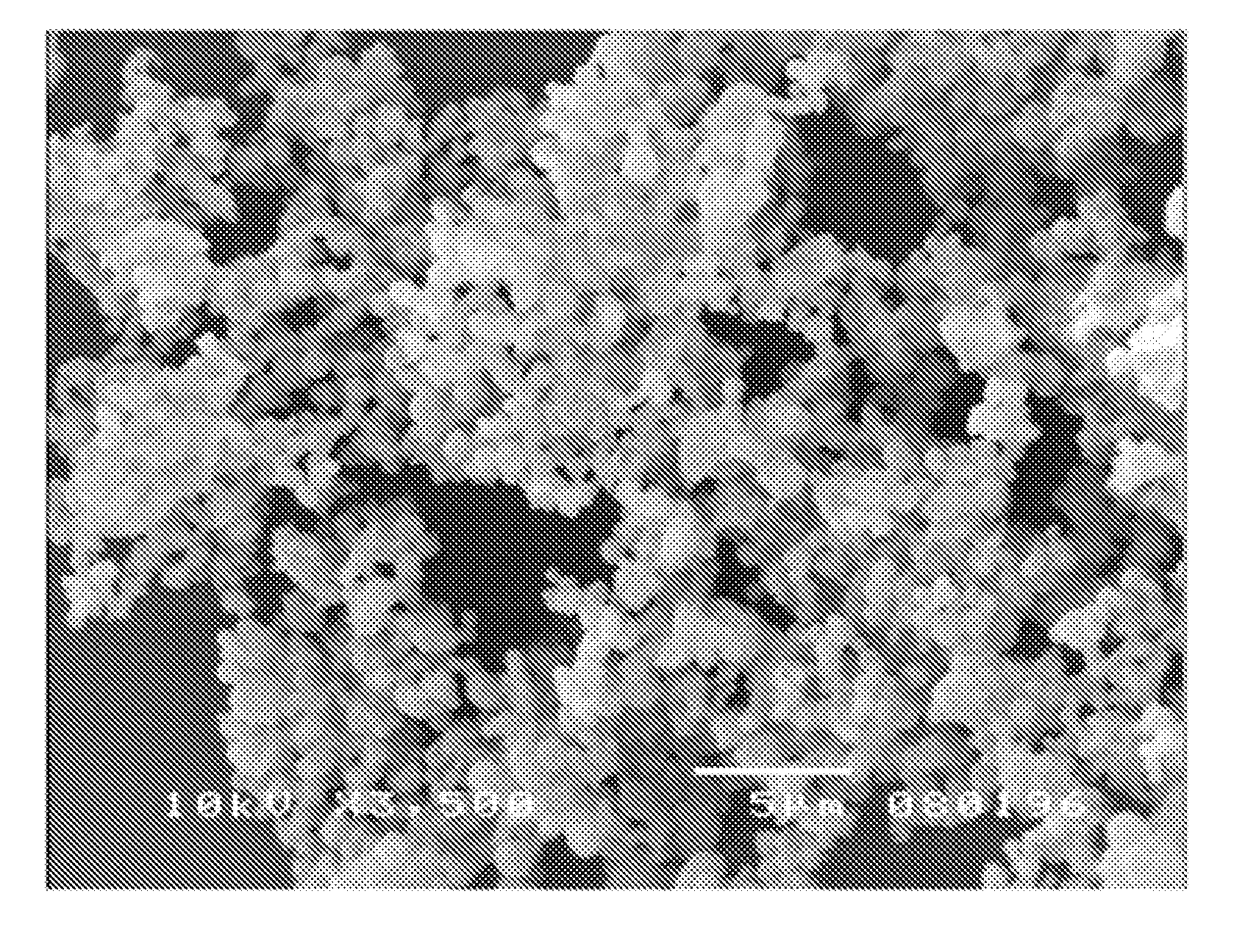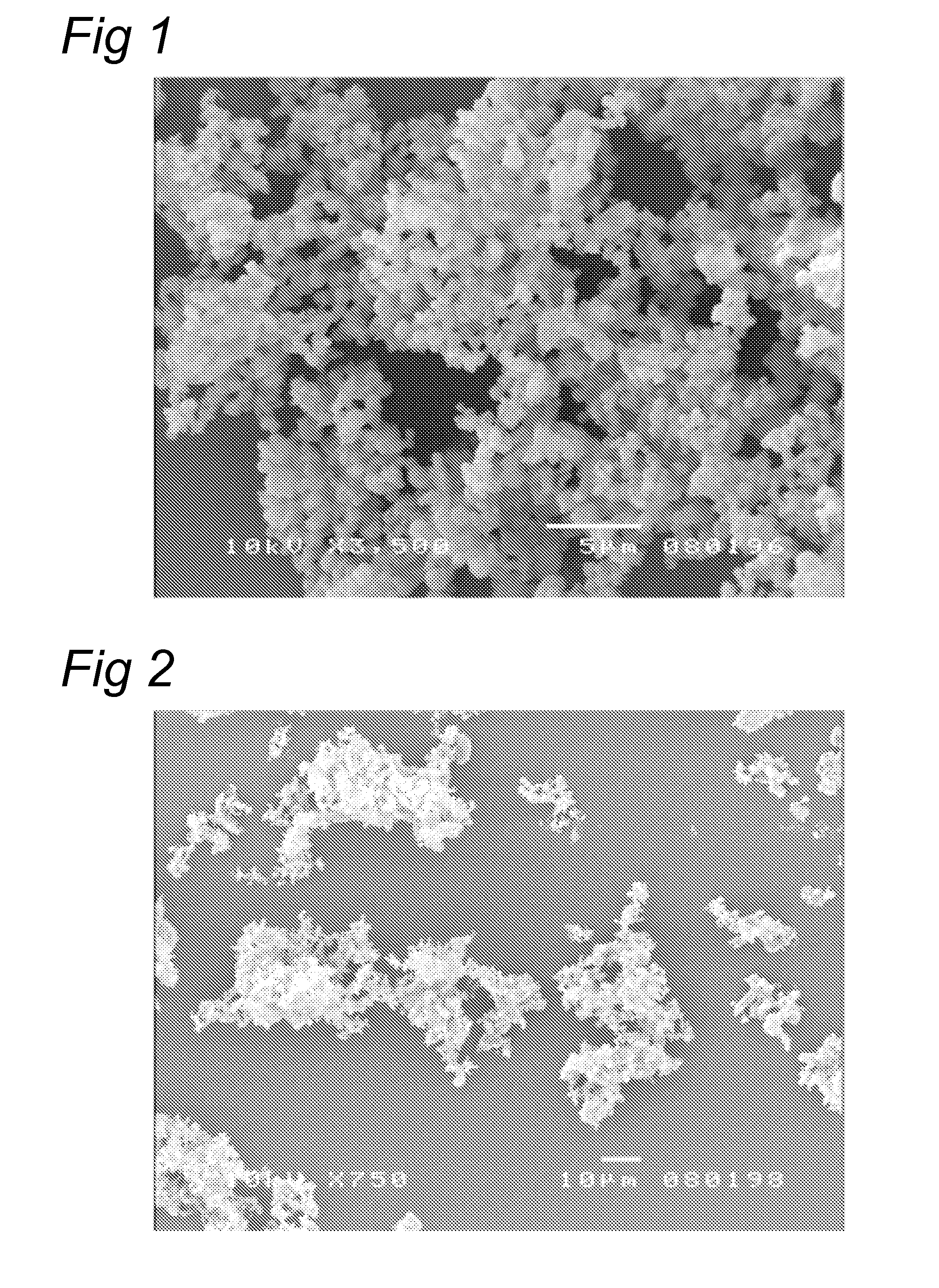Microencapsulate and process for the manufacture thereof
a technology of microencapsulates and microencapsulates, which is applied in the field of microencapsulates and, can solve the problems of difficult to achieve, explosion risks associated with the removal of organic solvents, and the use of organic solvents in the preparation of microencapsulates, so as to improve the water-dispersibility of the present microencapsulate, the effect of less vulnerable to shear
- Summary
- Abstract
- Description
- Claims
- Application Information
AI Technical Summary
Benefits of technology
Problems solved by technology
Method used
Image
Examples
example 1
[0091]Ethylcellulose (2.7 g, Ethocel® 100, The Dow Chemical Company) was dissolved into ethanol (87.3 g) by dispersing it in the solvent and applying stirring using an IKA® Ultra-Turrax for 1 min followed by sonication for 20 min.
[0092]Subsequently powdered iron pyrophosphate (1.22 g) having a mean particle size smaller than 5 μm, was dispersed into the solution after which the dispersion was stirred using the above mentioned high shear mixing device for 5 min.
[0093]The dispersion was rapidly transferred into a syringe pump, Isco® 260D, from which the dispersion was pumped into a high pressure vessel via the inside tube of a coaxial nozzle (Spraying systems Co., model 2050 / 64), that was mounted at the top of the vessel. The high pressure vessel was 4 litres in volume. Before pumping in the solution the vessel was pressurized with CO2 to 115 bar using a membrane pump (Orlita®). The CO2 entering the high pressure vessel was heated to 55° C. The vessel was heated to 55° C., through an ...
example 2
[0097]The iron containing microencapsulate described in Example 1 was applied in margarine. The microencapsulate powder was dispersed in the aqueous phase of the margarine to provide 3 mg of iron per 20 g of margarine. In the same fashion a margarine containing the same amount of supplemented iron was prepared using the non-encapsulated iron pyrophosphate powder described in Example 1.
[0098]The microencapsulate powder could easily be dispersed and was not visible in the mixture. The margarine containing the microencapsulate remained stable for at least 8 weeks upon storage at 4° C., as determined through the smell and colour of the margarine. In contrast, the margarine containing non-encapsulated iron pyrophosphate developed a perceptible off-flavour after only one day.
example 3
[0099]A microencapsulate containing solid iron(III) pyrophosphate was made as follows:
[0100]Ethyl cellulose (Ethocel® 100 premium) was dissolved into ethanol by dispersing it in the solvent and applying stirring using a IKA® Ultra-Turrax for 1 minute followed by sonication for 20 min. Separately, an aqueous solution was made comprising of 1.85% chitosan and 4.65% acetic acid. Subsequently fine powdered iron pyrophosphate (5%) was dispersed into this acidic aqueous solution. The dispersion was stirred using the above mentioned high shear mixing device for at least 5 minutes.
[0101]Subsequently, the ethyl cellulose solution was mixed with the aqueous chitosan dispersion using the above mentioned high shear mixing device for 5 minutes. Upon mixing, an emulsion was formed in which the iron pyrophosphate remained dispersed as a solid phase. The formed emulsion contained: 1.31% Fe, 0.49% chitosan and 1.1% ethyl cellulose.
[0102]The emulsion was rapidly transferred into a syringe pump, Isco®...
PUM
| Property | Measurement | Unit |
|---|---|---|
| pH | aaaaa | aaaaa |
| pH | aaaaa | aaaaa |
| pressure | aaaaa | aaaaa |
Abstract
Description
Claims
Application Information
 Login to View More
Login to View More - R&D
- Intellectual Property
- Life Sciences
- Materials
- Tech Scout
- Unparalleled Data Quality
- Higher Quality Content
- 60% Fewer Hallucinations
Browse by: Latest US Patents, China's latest patents, Technical Efficacy Thesaurus, Application Domain, Technology Topic, Popular Technical Reports.
© 2025 PatSnap. All rights reserved.Legal|Privacy policy|Modern Slavery Act Transparency Statement|Sitemap|About US| Contact US: help@patsnap.com


